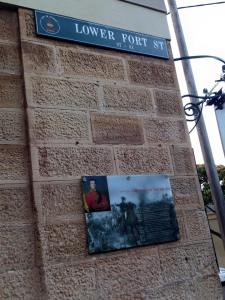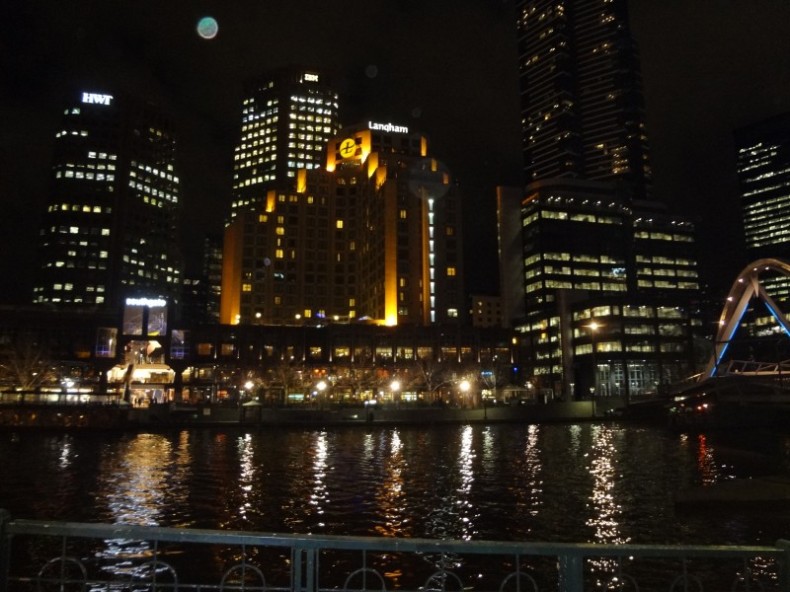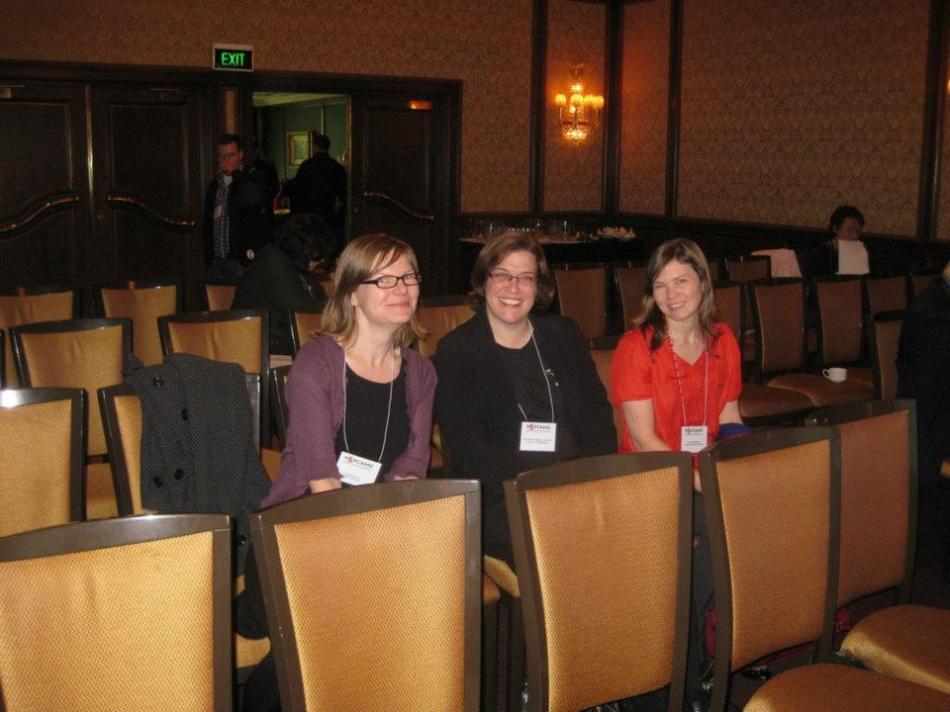There has been much excitement in the world of the authors of this humble blog lately – we were briefly reunited. Dr Roslyn upped and buggered off to the Mother Country a couple of years back, and so all our work has been done online (as opposed to our previous model, which was largely online, but every now and then I’d ring her up and announce, “I can’t write! This isn’t working! I’m too distracted!” and invite myself to her place for a working sleepover, sans kids).
So when I got an email asking me if I’d consider submitting an abstract for a conference in Oxford, the answer was a resounding yes. Oxford! OXFORD! You know, where Lyra and Pan were? Where Tolkien and Lewis studied? Where Alice is set and Harry was shot? That’s only a couple of hours away from where Roslyn is currently living, in a country I’ve always wanted to visit but had never quite made it? That one?

Yes, please.
So, yes, I submitted the abstract. And they accepted it. So off I set for the 13th Inter-Disciplinary Net Monsters and the Monstrous Conference: Monstrous Hungers.
But what to present? Well, with the Wolf Girls getting the band back together, it had to be something wolfy. And since my Day Job is working with students with disabilities (mainly mental health disorders), and Job #2 is training high school teachers how to deal with and engage adolescents, I opted to go with Martin Millar’s Wolf Girl trilogy: about an anxious, depressed, cutting, homeless addict who also happens to be a teenage werewolf.


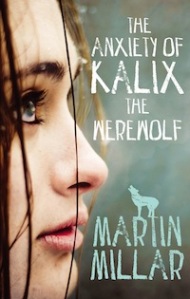
The itinerary was pretty much skewed to popular, rather than high, culture. We started with a trip to Wimbledon. I am not a believer in “Bucket Lists,” but when I was treated for cancer at the ripe old age of 31, a family decision was made that some things on the “we can do that in retirement” list needed to be moved to the “do it if the opportunity arises” list, and we set off to visit the Australian Open and the Great Ocean Road once my treatment was completed. After that taste of Grand Slam action, I thought I’d like to complete my own Slam (as a spectator) – Wimbledon, the US in New York (hey, it’s New York! – also on the must-see-but-never-been list) and if you’re going to go to three of them, you might as well go to the fourth, even if it is on clay. Plus, Paris. But up until going to visit someone who actually lived in the suburb of Wimbledon, I was still on Step 1.
So I was introduced to the wonders of The Queue, and then the even more wondrous idea that slightly used tickets get handed back in and you can buy a cheap second-hand ticket and actually get onto Centre Court to watch Finals. I still cannot believe that this actually happened.
Continuing the Wimbledon theme, we headed into Wimbledon Common where Roslyn assured me I would find no actual Wombles.

I know a Womble when I see one

Or three …
Continuing the low culture theme, we then set out on a quest to locate Sun Hill.

If the guys were hanging around out the front, that would be even better …
We knew that the studio and Sun Hill set was in Wimbledon. We found out the address (we are researchers, after all). And then we kept seeing police cars as we trudged through the drizzle of an out-of-the-way industrial estate.

A good sign?
I was ready to give up but Roslyn (as usual) had done more research than me, and was therefore more confident of an outcome. And we turned the corner and there it was … Sun Hill station. There was much gasping and carrying on from me, and I was there hyperventilating long enough for a security guard to come and advise us we “couldn’t be on site” but to take as many photos as we needed on the way out.

Embarrassingly happy
We also had a trip to the London Eye (which did NOT act as an aerial for Doctor Who, on that occasion), walked all over London including around Westminster Abbey (where David Tennant was NOT playing a conniving politician, on this occasion), took a Beatles-esque photo on Abbey Road and –another highlight–checked out Mamma Mia in Covent Garden.


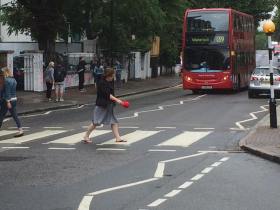 But there was one very big, high culture moment … Richard II at Shakespeare’s Globe. Not gonna lie, there was a teary moment when that idea hit home.
But there was one very big, high culture moment … Richard II at Shakespeare’s Globe. Not gonna lie, there was a teary moment when that idea hit home.

Bear in mind, I’m a recovering English teacher
And on to Oxford. The conference was held in Mansfield College and the meals were served in a Harry Potter-esque chapel.


The conference was fascinating and intense and as we’ve already established in Oxford. And afterwards a few of us managed to have our final dinner and drink at The Turf, where former Australian PM Bob Hawke broke the world skolling record and former US President Bill Clinton allegedly did not inhale.
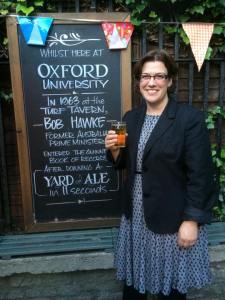
I can’t down a yard glass at all, let alone in that time frame
Ros joined me the day after the conference for some literary nerd Oxford adventures. We checked out Blackwell’s bookshop (where they were celebrating the 150th anniversary of Alice in Wonderland), and went to the Eagle and Child (where Tolkien and Lewis hung out), and also the Marks of Genius exhibition at the Bodleian Library which blew my tiny little mind by having things on display like Tolkien’s hand-drawn cover for the Hobbit; a 13-year-old Jane Austen’s novel, dedicated to her sister, Cassandra; the original hand-written draft of The Wind in the Willows; and two excised pages of Shelley’s Frankenstein, in which Frankenstein and Clerval roam around Oxford.
Free exhibition, people.

If you look closely, you can see my mind *actually* being blown
This trip had it all: sport and Shakespeare, ABBA and Abbey Road, Wimbledon and Wombles, werewolves and woodentops, sandstone and Shelley. It was the best of pop music, pop culture, literature and drama. Anytime London calls, I reckon I’ll go.






















